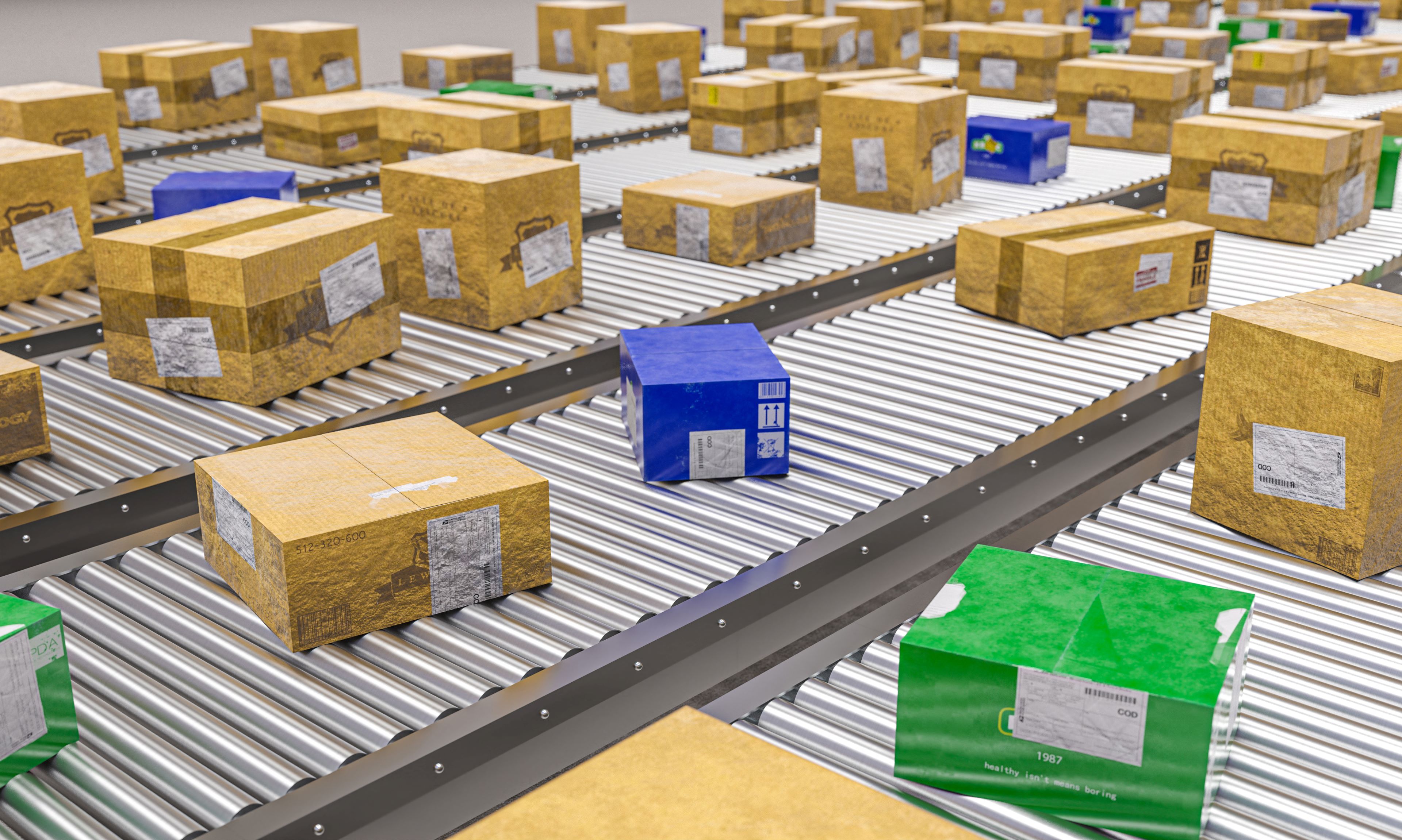EY refers to the global organization, and may refer to one or more, of the member firms of Ernst & Young Global Limited, each of which is a separate legal entity. Ernst & Young Global Limited, a UK company limited by guarantee, does not provide services to clients.
Insights
Asking the better questions that unlock new answers to the working world's most complex issues.
Services
EY helps clients create long-term value for all stakeholders. Enabled by data and technology, our services and solutions provide trust through assurance and help clients transform, grow and operate.
Industries
Discover how EY insights and services are helping to reframe the future of your industry.
See more
Case studies
About us
At EY, our purpose is building a better working world. The insights and services we provide help to create long-term value for clients, people and society, and to build trust in the capital markets.
See more
Top news
Press release
86% of Indian CEOs Prioritize Emerging Technology Investments: EY Report
31 Mar 2025EY India
Press release
India's M&E Sector crosses INR2.5 trillion in 2024, advertising revenues surge by 8.1%: FICCI- EY
27 Mar 2025EY India
Press release
EY India launches customised fine-tuned LLM to enhance AI adoption in BFSI sector
26 Mar 2025EY India
Recent Searches
Trending
-

How Indian CEOs are balancing optimism, transformation and resilience
Indian CEOs prioritize AI, talent retention, and transformation in 2025: 88% optimistic about business prospects, focusing on customer engagement and innovation. Learn more.
01 Apr 2025 -

How financial services can evolve to stay relevant for Gen Z
Explore Gen Z’s impact on India’s financial sector. Discover trends in trust, tech, and tactics shaping banking, payments, and investments for this key group. Learn more.
01 Apr 2025 -

How can manufacturing and MSMEs grow faster with digital transformation
Discover how digital transformation empowers manufacturing and MSMEs to optimize operations, drive innovation, and thrive in a competitive landscape.
31 Mar 2025
Select your location

Leading into the future: A conversation with Madhavi Kanumoory
Our new podcast series titled ‘Inspiring Voices’ celebrates the journeys of accomplished women leaders from India Inc. In this inaugural episode, hosted by Radhika Saigal, Partner, Technology Consulting, EY India, we explore diverse perspectives with Madhavi Kanumoory, Chief Digital and Information Officer at Birla Carbon. With a passion for innovation and experience in driving strategic growth, Madhavi's professional journey is a testament to the power of diversity and the impact that women can have in STEM. As we dive deep into her experiences and insights, we aim to inspire and guide women on their paths to success. Join us as we explore the crucial role of higher participation of women in technology and the transformative power of inclusive leadership.
In conversation with:
Key takeaways
- Enterprises must embrace co-creation and co-solving to drive innovation and achieve high-impact business outcomes through diverse perspectives and expertise.
- Prioritize visibility and support for women in tech to bridge the gap between talent incubation and leadership roles.
- Integrate work-life priorities holistically to empower personal and professional growth.
My passion for technology drove me towards exploring information technology, software development, and the realm of data.
Madhavi Kanumoory
Chief Digital and Information Officer, Birla Carbon
For your convenience, a full text transcript of this podcast is available on the link below:
Before we introduce our esteemed guest, a thought-provoking statistic, only 0.5% of women in non-tech sectors hold tech roles, highlighting the need for a greater female participation. India leads with 43% of women in STEM set to rise with government initiatives. These are among the vital issues we will explore in depth in today's dialogue.
Now, let us proceed without further ado to welcome our distinguished guest. Today we have the immense pleasure of hosting Madhavi Kanumoory, the Chief Digital and Information Officer at Birla Carbon. Madhavi is an esteemed IT leader with a stellar reputation for her passion for driving innovation through contemporary technologies. She has proven track record in building and leading large organizations, leveraging her expertise to foster digital transformation and strategic growth.
Madhavi, it is truly wonderful to have you with us. Your journey and achievements in the IT sector are incredibly inspiring, and I am excited to delve into your experiences and insights. Thank you for joining us today.
Madhavi Kanumoory: Thanks so much for the warm welcome, Radhika and the EY team. Really glad to be here with you all. I appreciate the invite and look forward to the discussion.
Radhika Saigal: Super. So, Madhavi, let me ask you the first question. Would you tell us about your journey to become the Chief Digital and Information Officer at Birla Carbon and the driving force behind your career?
Madhavi Kanumoory: Great question. first of all, I honestly did not think that this is the goal when I first set forth to start off in my career journey. All I knew was I wanted to make a difference. I wanted to make a difference to the community. I wanted to bring in the best skill sets I have to the table. And quite honestly, I really wanted to explore my own potential as I started the journey. So, from the time I did my final year project in engineering, I have been fascinated with technology. It was no way similar in nature to how advanced it is today. However, I think, early on, I kind of recognized that this could be something that would be very exciting and make a difference to the world at large. Though I graduated as an electrical and electronics engineer, my passion for technology took me to that route in terms of looking at information technology, software development, and data which at the time was called expert systems. I do not know if any of you have heard of it, but that used to be called the artificial intelligence of that day and age. That word did not exist. And so, that is how I set forth and I think, you know, one thing led to another and because of my passion incrementally contributing to organizations and the impact I could make really led the way to the various opportunities that I was able to leverage throughout my career.
So long story short, I went from tech specific roles to roles looking at impacting business from technology. That is how I kind of built my career. I took opportunities in areas that I was not comfortable; that I had no exposure to. So every new opportunity I took used to be a new area, both from the standpoint of learning and also leveraging my strengths to contribute to the organization.
At some point in time and career, I started to say, “okay, I really enjoyed, delivering business solutions from a technology perspective to various different functions, it would be kind of nice if I were to stitch everything together and really contribute at a much higher level.” And that is when I think I started to think about how I grow my leadership potential and look at influencing functions outside of the technology organizations to enable those bigger business outcomes and that is probably what led to where I am today.
Radhika Saigal: Very, very inspiring. And that leads me to the next question on innovation. Innovation is at the heart of digital transformation. How do you foster that culture of innovation within your teams, and what role does purpose play and how do you keep them motivated?
Madhavi Kanumoory: Great. I think that is a wonderful question, Radhika. First of all, at Birla Carbon, innovation is a very big area of focus at a business level, not just in my team or my organization. At a business level, it is a very big focus and that helps a lot with creating that focus, including in my function.
We have a very good network of digital and innovation ambassadors across the company and the business. We run programs, teaching different, various different methodologies and also training in order to foster that culture, bringing it to my function and digital and IT . As you rightly said, I think it is front and center of digital transformation. We believe in co-creation and co solving. So we promote the culture of what we call “fusion teams”, where we bring in subject matter experts from various different functions to come together to co-create and co-solve high impact business outcomes for the business. And when you bring these experts together and putting digital as part of that whole co-creation exercise, that fosters a lot of innovation because you have got ideas coming in from various different functions, expertise, diversity and inclusion as a big part of this, this whole thing as well and that is how we foster innovation. We have a very good technology and talent ecosystem that helps innovate faster in terms of bringing in those really quick, minimal viable projects into fruition, so people can actually touch and feel and see if they are going in the right direction. It helps us build fast and save and pivot or persevere based on the results that we see at every step of that innovation journey as we co-create and co-solve for business results. So, I think that is how innovation, like you rightly said, is definitely front and center to digital transformation.
Radhika Saigal: That is awesome. This is all about being agile and leading a large organization comes with its unique challenges. What strategies do you employ to ensure your team remains agile and are focused on high impact outcomes, rather than getting bogged down with mundane tasks?
Madhavi Kanumoory: That is a great question. I think we sort of answered that in the previous one because that is how we work. That is the way of life. Just to add to that, we have a very defined process and methodology in terms of how we approach as our work. We kind of have big pipeline of digital transformation is everywhere.
So, everyone wants it and all that kind of stuff. But as we do the prioritization, part of the process actually enables us to understand the business value and the impact that a particular program or project would create from an overall outcome . And that is how we filter in the funnel of opportunities that we have coming into digital an IT.
Radhika Saigal : Awesome. Give me an example of one such project or initiative which will make this even more real, which you have delivered under your leadership and it has significantly impacted either Birla Carbon or industry at large.
Madhavi Kanumoory: Sounds great. I will give you two examples—one from Birla Carbon and one from outside the company. At Birla Carbon, we have been working on a sales and operations planning project with Ernst and Young that went live last year. The technology – EY-Blue Yonder—we have implemented is already making an impact. I do not think we fully realized the extent of its potential until recently. We went live late last year or early this year, and we are starting to see the benefits. To give you some context, we have 16 manufacturing sites and operate in over ten countries worldwide.
Managing the demand from our customers and delivering against that demand in the most efficient and profitable way is both an opportunity and a challenge for us. Bringing together teams from different business functions and digital IT, partnering with experts like you, and focusing on business outcomes have proven to be extremely effective.
Outside of Birla Carbon, another example that stands out is the services digitalization project at a previous company I worked for. The challenge was to digitalize the entire services organization. By fostering innovation, bringing teams together, and focusing on business outcomes, we were able to differentiate ourselves in how we met customer needs, being proactive and understanding our customers better than they knew themselves. Those are a couple of examples that come to mind quickly.
Radhika Saigal: Very impressive. Madhavi, in your opinion, what are some effective measures an organization can take to create a more inclusive environment for underrepresented groups in technology?
Madhavi Kanumoory: Right. I think it starts with mindsets. As I became more interested in the diversity and inclusion agenda, it became clear that a mindset shift is crucial at all levels, starting from the top. The statistics you have mentioned—43% diversity in STEM and only 0.5% in leadership roles in the non-tech industry—is a huge gap. There are plenty of studies that show the value diversity and inclusion bring to the table. So, recognizing this impact is the first step.
The second point is that the onus does not lie with one side alone. Individuals from underrepresented communities also have to voice their capabilities, needs, and contributions to the business. It is difficult for those in the non-underrepresented communities to fully understand the other side, even with deliberate effort.
As leaders, we have a role to play in actively promoting diversity, addressing its pros and cons, and fostering an environment where underrepresented communities can thrive. This might involve structural changes, policies, and other initiatives. We have both an opportunity and a responsibility to influence this positively.
Radhika Saigal: Absolutely. Extremely pertinent points you have brought forth. Madhavi, why do you believe it is important for the future of technology to have a diverse and inclusive agenda? How do diverse perspectives on problem-solving and innovation make an impact when it comes to digital transformation?
Madhavi Kanumoory: Sure. When we talk about the gap—43% of people entering STEM but very few moving into leadership roles—it is clear we are losing out on creativity and talent. It is a huge, missed opportunity for businesses. From a business perspective, tapping into this talent is crucial.
On a personal level, women, in particular, take pride in being self-reliant—not just supporting themselves, but their families and communities as well. This sense of pride is a powerful motivator for driving the diversity and inclusion agenda.
Diverse perspectives are essential for problem-solving and innovation. When you exclude a significant portion of the population from ideation and problem-solving, you miss out on potential creative solutions. Moreover, if your customer base is equally represented by men and women, but you are not including female perspectives, you are not fully addressing the needs of your audience. Including a diverse range of perspectives ensures your solutions are more comprehensive and effective.
Radhika Saigal: Indeed. Considering that only 0.5% of women in non-tech sectors move into leadership roles, what can companies do to create more opportunities and support systems for women in these sectors? Specifically, what programs have you implemented at Birla Carbon to support the professional development of women in tech?
Madhavi Kanumoory: That is a great question. First of all, I am not biased towards tech or non-tech industries. But to your point, there is a lot of potential in the talent incubated in the tech sector that can be applied in non-tech sectors. At the end of the day, we all want to solve bigger problems and create impactful change on a larger scale. That is often what the non-tech sector offers.
One thing we focus on at Birla Carbon is creating visibility around career paths that allow for growth and impact. We have also launched initiatives like employee resource groups and Tech Thursdays—not just for women but for everyone—to help grow in the tech ecosystem. These support groups are key in fostering development.
Radhika Saigal: It is great to hear about the support groups various companies are creating. While progress is happening, it is not moving as quickly as it needs to, and a lot depends on women themselves. My last question is: what advice would you give to young women and individuals from diverse backgrounds who aspire to leadership roles in the technology sector?
Madhavi Kanumoory: I often tell those entering the workforce, especially women right out of college, that there are two sides to the coin: personal and professional. Your professional aspirations need to be balanced with your personal life. I am not a big fan of work-life balance but rather work-life integration. Viewing your life holistically, rather than as two separate entities, helps you manage both sides more effectively. Once your priorities are clear, do not let anything stop you. That is my advice to the younger generation, especially women, entering the workforce.\
Radhika Saigal: That is fantastic advice, Madhavi. Your insights have been incredibly inspiring, and it is clear your leadership is making a significant impact at Birla Carbon. Thank you for taking the time to join us on ‘Inspiring Voices’.
Madhavi Kanumoory: Thank you, Radhika. It has been a pleasure talking with you, and I appreciate the invitation and the work the EY ecosystem is doing to promote diversity and inclusion. Best wishes to everyone involved.
Radhika Saigal: Thank you, Madhavi. And to our listeners, thank you for tuning in. We hope you found today’s episode inspiring and insightful. Do not miss the next episode of ‘Inspiring Voices’ where we will continue to highlight the stories of successful women leaders driving change and innovation. Stay tuned for more empowering narratives and valuable lessons from these trailblazers.
Until next time, keep investing in your growth, leading with purpose, and striving to make a difference. Thank you. I am signing off.
If you would like to listen to our podcasts on the go:
In this series
07
Mar 2024
Celebrating Women: Insights on Diversity and Inclusion
In the first episode of our special series celebrating International Women’s Day, our Executive Sponsor for DEI, EY Sonu Iyer engages in a captivating conversation with Meera Shenoy, the visionary founder of Youth4Jobs.
Episode 01
07 Mar 2024
16m 44s

